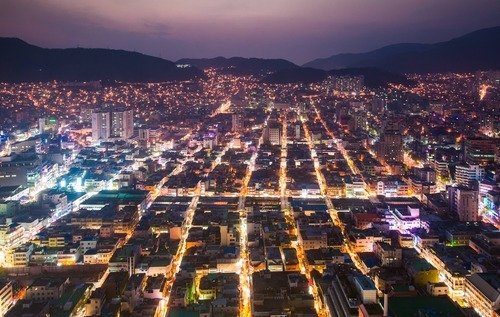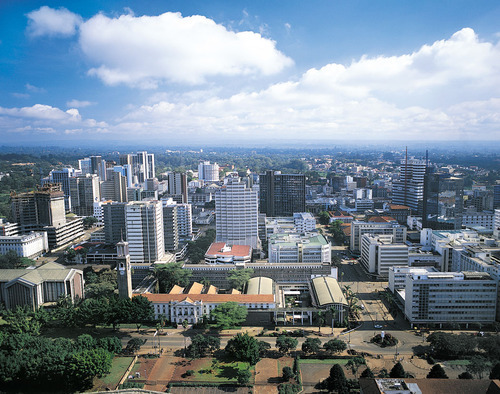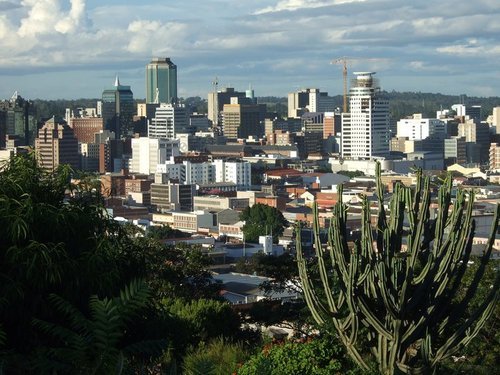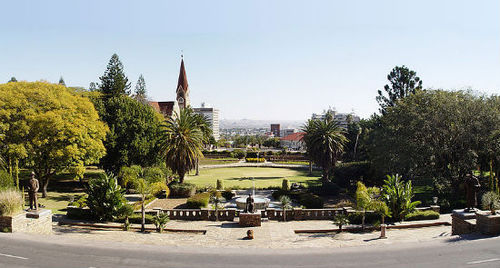Dumpsite of pre-existing and homemade conspiracy theories with no boundaries
Don't wanna be here? Send us removal request.
Photo

© amazon
CONSPIRACY RANT #1
Sustainable Development through Agenda 21
Many would say that I’m a psychopath—my love for gore, murder and death is simply reflected with my taste of music, movie and books. However, my psychopathic mind does have a limit. There are just things that I cannot help but to fear, like my fear of heights, of water and (ironically) of blood. But what tops my list is the possibility of a ruined society due to a dysfunctional government system.
Harriet Parke’s Agenda 21 is the definition of a spine-chilling foreshadowing. The way words were used to construct a world from a (not-so) distant future is a display of both excellence and political agenda.
The story revolves around Emmeline, a young girl raised in “The Republic” after the total take-over of the authoritarian entities over the land once known as America. She was not able to experience nor remember life before Republic, but was fortunate enough to live with her parents unlike those who were forced to be brought up by the authority. Due to her proximity with the truth provided to her by her mother, she slowly unveiled the reality behind “The Republic” and faced challenges invoked by her own obedience to the nation and her yearning for freedom.
The story was backed-up with well-researched data, which was shown through the simple details of the novel from advance technology, wide use of public land, “walkable cities”, reduce use of power and population. The way Harriet Parke built this near-future was exemplary in terms of grounded laws and norms showcased through the dialogue and actions taken by the characters.
The setting was highly effective due to the reason, the characters’ motivation and development arc’s movement was justified and was not forced.
Emmeline, the protagonist of the story, gripped her child-like development arc for a long period of time within the novel which left the impression that the character is yet to let go of her past, including her parents and former husband. However, despite her firm grip on her initial arc, her development was gradual and was a bit expected if I must say.
She turned into a child into a mother, easily adapting the habits of her own mother. It was a great correlation and it puts a bit of spice on the novel. It is with this development from a child to a mother did main driving force of the novel. It was her development, this specific part of it,that led to the events that transpired soon after, therefore solidifying her character’s motive and growth.
Moreover, each supporting character were given a chance to showcase their own story, again contributing to the amazing talent of Parke on world-building.
May it be a character of flat or round identity, they were all motivated towards their own goal.
David, for example, her second lover, was a flat character. He is a supportive and protective character over Emmeline however, Parke managed to show at least misleading strain to these qualities by suggesting that David will stop protecting Emmeline.
It gave a different kind of thrill, especially since it ventures through the world of mild romance, a great change from the problematic sci-fi thriller the novel is originally dubbed as.
Further, the cover testifies greatly to the genre of the novel. The use of grey and black to enhance silhouettes along with the translucent emblem of “The Republic” gives off a sense of authority in a dystopian setting. The aesthetic appeal of the book contributes to the theme of the novel—freedom and dominance.
Mix the aesthetic value of the cover and the domineering title, the book is obviously an eye-catcher.
Perhaps a factor to thank for the well-grounded world this novel revolves in is the real Agenda 21 that the author used as basis.
Agenda 21 is an anticipated UN program that will sustain the Earth’s good health through an action plan of 26 principles and 7 proclamation. The Agenda 21 seems to be a harmless pro-nature propaganda, however, if one will cut through the flowery words used to describe the program, one will come to the conclusion that this program wouldn’t be as harmless as it sound.
However, it is important to take note that despite having its roots from the failed UN program, the novel, Agenda 21, is just a representation of the worst case scenario if such was pushed through.
It was pushing the limits of the program if I must.
But according to the author, Harriet Parke on her own blogpost, this novel is a result of fear from what could transpire if the words written under the program was executed to their fullest meaning. This is a result of her desire to educate those around her of the government’s possible foul plays.
The only drawback of this novel, for me, is the cliffhanger. Yes, Parke was able to achieve the goal of a cliffhanger: ask for what will happen next. However, I think the cliffhanger was positioned too early. The scene wherein the device was used was just the climax of the story, there were many questions unanswered and there were no resolutions. The cliffhanger was hanging dangerously along the tip of the cliff, and if Parke weren’t able to create such a wonderful piece of a novel, then that misplaced cliffhanger could have ended the novel’s career.
If one must look at it plainly, “Oh, it’s just a book, no one will read it,” then perhaps, there’s nothing to fear. Its just a work of our powerful minds, one that is far from our reality. But for someone like me, whose reality lies within the pages of a book, there’s much to fear–and that’s when these “work of the mind” became reality.
14 notes
·
View notes
Text
The Truth About Filtered Social Media Content
Someone said "Are you really so stupid to think that Africa has the same technological advances as us? If they did they would probably have clean water and not live in houses made of sticks and mud. Get over yourself and stop being so ignorant."..... Below is a tiny collection of images of the Africa they refuse to show you..




ches






I’m sorry you’ve been made to believe that the whole of Africa is poor, I really am..
#Wakanda Wakandaforever#Wakanda#WakandaForever#Wakanda Forever#Africa#Urbanization#Urban#Techonology#Technology Advancements
787K notes
·
View notes
Photo

© amazon
CONSPIRACY RANT #1
Sustainable Development through Agenda 21
Many would say that I’m a psychopath—my love for gore, murder and death is simply reflected with my taste of music, movie and books. However, my psychopathic mind does have a limit. There are just things that I cannot help but to fear, like my fear of heights, of water and (ironically) of blood. But what tops my list is the possibility of a ruined society due to a dysfunctional government system.
Harriet Parke’s Agenda 21 is the definition of a spine-chilling foreshadowing. The way words were used to construct a world from a (not-so) distant future is a display of both excellence and political agenda.
The story revolves around Emmeline, a young girl raised in “The Republic” after the total take-over of the authoritarian entities over the land once known as America. She was not able to experience nor remember life before Republic, but was fortunate enough to live with her parents unlike those who were forced to be brought up by the authority. Due to her proximity with the truth provided to her by her mother, she slowly unveiled the reality behind “The Republic” and faced challenges invoked by her own obedience to the nation and her yearning for freedom.
The story was backed-up with well-researched data, which was shown through the simple details of the novel from advance technology, wide use of public land, “walkable cities”, reduce use of power and population. The way Harriet Parke built this near-future was exemplary in terms of grounded laws and norms showcased through the dialogue and actions taken by the characters.
The setting was highly effective due to the reason, the characters’ motivation and development arc’s movement was justified and was not forced.
Emmeline, the protagonist of the story, gripped her child-like development arc for a long period of time within the novel which left the impression that the character is yet to let go of her past, including her parents and former husband. However, despite her firm grip on her initial arc, her development was gradual and was a bit expected if I must say.
She turned into a child into a mother, easily adapting the habits of her own mother. It was a great correlation and it puts a bit of spice on the novel. It is with this development from a child to a mother did main driving force of the novel. It was her development, this specific part of it,that led to the events that transpired soon after, therefore solidifying her character’s motive and growth.
Moreover, each supporting character were given a chance to showcase their own story, again contributing to the amazing talent of Parke on world-building.
May it be a character of flat or round identity, they were all motivated towards their own goal.
David, for example, her second lover, was a flat character. He is a supportive and protective character over Emmeline however, Parke managed to show at least misleading strain to these qualities by suggesting that David will stop protecting Emmeline.
It gave a different kind of thrill, especially since it ventures through the world of mild romance, a great change from the problematic sci-fi thriller the novel is originally dubbed as.
Further, the cover testifies greatly to the genre of the novel. The use of grey and black to enhance silhouettes along with the translucent emblem of “The Republic” gives off a sense of authority in a dystopian setting. The aesthetic appeal of the book contributes to the theme of the novel—freedom and dominance.
Mix the aesthetic value of the cover and the domineering title, the book is obviously an eye-catcher.
Perhaps a factor to thank for the well-grounded world this novel revolves in is the real Agenda 21 that the author used as basis.
Agenda 21 is an anticipated UN program that will sustain the Earth’s good health through an action plan of 26 principles and 7 proclamation. The Agenda 21 seems to be a harmless pro-nature propaganda, however, if one will cut through the flowery words used to describe the program, one will come to the conclusion that this program wouldn’t be as harmless as it sound.
However, it is important to take note that despite having its roots from the failed UN program, the novel, Agenda 21, is just a representation of the worst case scenario if such was pushed through.
It was pushing the limits of the program if I must.
But according to the author, Harriet Parke on her own blogpost, this novel is a result of fear from what could transpire if the words written under the program was executed to their fullest meaning. This is a result of her desire to educate those around her of the government’s possible foul plays.
The only drawback of this novel, for me, is the cliffhanger. Yes, Parke was able to achieve the goal of a cliffhanger: ask for what will happen next. However, I think the cliffhanger was positioned too early. The scene wherein the device was used was just the climax of the story, there were many questions unanswered and there were no resolutions. The cliffhanger was hanging dangerously along the tip of the cliff, and if Parke weren’t able to create such a wonderful piece of a novel, then that misplaced cliffhanger could have ended the novel’s career.
If one must look at it plainly, “Oh, it’s just a book, no one will read it,” then perhaps, there’s nothing to fear. Its just a work of our powerful minds, one that is far from our reality. But for someone like me, whose reality lies within the pages of a book, there’s much to fear–and that’s when these “work of the mind” became reality.
14 notes
·
View notes
Text
Marcine Herinck, 89, tortured and murdered after reprimanding man for looking up her skirt

A Multnomah County grand jury handed up a 23-count indictment against a registered sex offender accused of killing an 89-year-old Portland woman and stashing her body in the trunk of his car.
Authorities say Timothy Joseph Mackley, 58, also sexually abused Marcine Herinck after he kidnapped her from her Northeast 150th Avenue home last month, according to the indictment filed in court Wednesday.
The 4-foot-10 great-grandmother, whose disappearance prompted a frantic five-day search, died from “intentional torture and intentional maiming,” the Multnomah County District Attorney’s Office said.
Authorities say he encountered Herinck on Sept. 18 at the Northeast Portland food pantry and thrift store where the churchgoer and avid volunteer stocked shelves once a week.
Mackley was asked to leave after the elderly woman accused him of trying to look up her dress when he dropped a cellphone on the ground.
He trailed Herinck home from her volunteer shift that day, authorities said. Mackley later broke into the woman’s house and kidnapped her, the indictment alleges.
She was reported missing the next day by her family. https://www.oregonlive.com/portland/2018/10/portland_woman_89_found_in_tru.html
769 notes
·
View notes
Photo

(c) amazon
CONSPIRACY RANT #1
Sustainable Development through Agenda 21
Many would say that I’m a psychopath—my love for gore, murder and death is simply reflected with my taste of music, movie and books. However, my psychopathic mind does have a limit. There are just things that I cannot help but to fear, like my fear of heights, of water and (ironically) of blood. But what tops my list is the possibility of a ruined society due to a dysfunctional government system.
Harriet Parke’s Agenda 21 is the definition of a spine-chilling foreshadowing. The way words were used to construct a world from a (not-so) distant future is a display of both excellence and political agenda.
The story revolves around Emmeline, a young girl raised in “The Republic” after the total take-over of the authoritarian entities over the land once known as America. She was not able to experience nor remember life before Republic, but was fortunate enough to live with her parents unlike those who were forced to be brought up by the authority. Due to her proximity with the truth provided to her by her mother, she slowly unveiled the reality behind “The Republic” and faced challenges invoked by her own obedience to the nation and her yearning for freedom.
The story was backed-up with well-researched data, which was shown through the simple details of the novel from advance technology, wide use of public land, “walkable cities”, reduce use of power and population. The way Harriet Parke built this near-future was exemplary in terms of grounded laws and norms showcased through the dialogue and actions taken by the characters.
The setting was highly effective due to the reason, the characters’ motivation and development arc’s movement was justified and was not forced.
Emmeline, the protagonist of the story, gripped her child-like development arc for a long period of time within the novel which left the impression that the character is yet to let go of her past, including her parents and former husband. However, despite her firm grip on her initial arc, her development was gradual and was a bit expected if I must say.
She turned into a child into a mother, easily adapting the habits of her own mother. It was a great correlation and it puts a bit of spice on the novel. It is with this development from a child to a mother did main driving force of the novel. It was her development, this specific part of it,that led to the events that transpired soon after, therefore solidifying her character’s motive and growth.
Moreover, each supporting character were given a chance to showcase their own story, again contributing to the amazing talent of Parke on world-building.
May it be a character of flat or round identity, they were all motivated towards their own goal.
David, for example, her second lover, was a flat character. He is a supportive and protective character over Emmeline however, Parke managed to show at least misleading strain to these qualities by suggesting that David will stop protecting Emmeline.
It gave a different kind of thrill, especially since it ventures through the world of mild romance, a great change from the problematic sci-fi thriller the novel is originally dubbed as.
Further, the cover testifies greatly to the genre of the novel. The use of grey and black to enhance silhouettes along with the translucent emblem of “The Republic” gives off a sense of authority in a dystopian setting. The aesthetic appeal of the book contributes to the theme of the novel—freedom and dominance.
Mix the aesthetic value of the cover and the domineering title, the book is obviously an eye-catcher.
Perhaps a factor to thank for the well-grounded world this novel revolves in is the real Agenda 21 that the author used as basis.
Agenda 21 is an anticipated UN program that will sustain the Earth’s good health through an action plan of 26 principles and 7 proclamation. The Agenda 21 seems to be a harmless pro-nature propaganda, however, if one will cut through the flowery words used to describe the program, one will come to the conclusion that this program wouldn’t be as harmless as it sound.
However, it is important to take note that despite having its roots from the failed UN program, the novel, Agenda 21, is just a representation of the worst case scenario if such was pushed through.
It was pushing the limits of the program if I must.
But according to the author, Harriet Parke on her own blogpost, this novel is a result of fear from what could transpire if the words written under the program was executed to their fullest meaning. This is a result of her desire to educate those around her of the government’s possible foul plays.
The only drawback of this novel, for me, is the cliffhanger. Yes, Parke was able to achieve the goal of a cliffhanger: ask for what will happen next. However, I think the cliffhanger was positioned too early. The scene wherein the device was used was just the climax of the story, there were many questions unanswered and there were no resolutions. The cliffhanger was hanging dangerously along the tip of the cliff, and if Parke weren’t able to create such a wonderful piece of a novel, then that misplaced cliffhanger could have ended the novel’s career.
If one must look at it plainly, “Oh, it’s just a book, no one will read it,” then perhaps, there’s nothing to fear. Its just a work of our powerful minds, one that is far from our reality. But for someone like me, whose reality lies within the pages of a book, there’s much to fear--and that’s when these “work of the mind” became reality.
14 notes
·
View notes